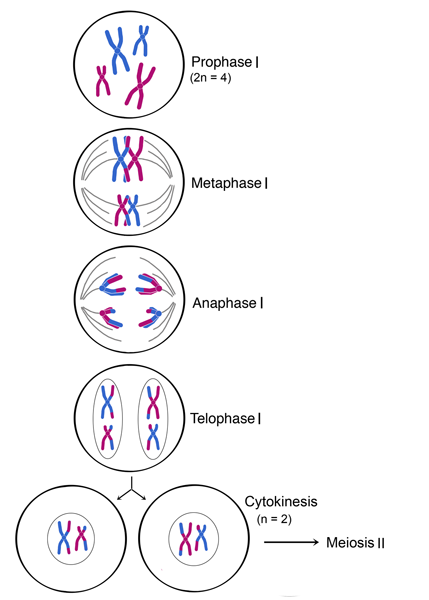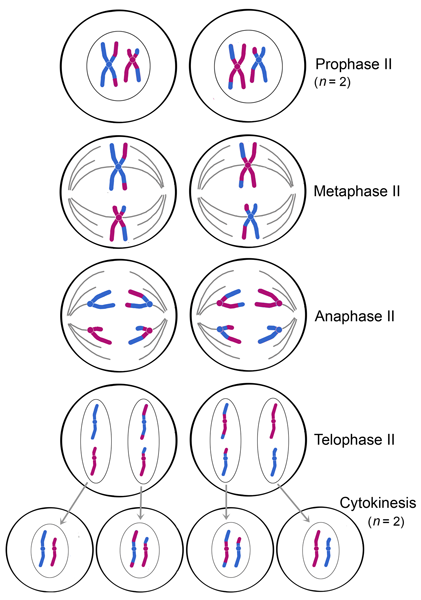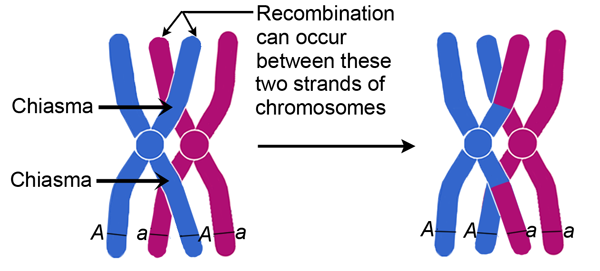
Meiosis I

Meiosis II

Meiosis I

Meiosis II
Interphase I: Identical to Interphase in mitosis.
Prophase I: Identical to Prophase in mitosis.
Metaphase I: Instead of all chromosomes pairing up along the midline of the cell as in mitosis, homologous chromosome pairs line up next to each other. This is called synapsis. Homologous chromosomes contain the matching alleles donated from mother and father. This is also when meiotic recombination, also know as "crossing over" (see below) occurs. This process allows for a genetic shuffling of the characteristics of the two parents, creating an almost infinite variety of possible combinations. See the close-up diagram below.
Anaphase I: Instead of chromatids splitting at the centromere, homologous chromosome pairs (now shuffled by crossing over) move along the spindle fibers to opposite poles.
Telophase I: The cell pinches and divides.
Prophase II: It is visibly obvious that replication has not occurred.
Metaphase II: The paired chromosomes line up.
Anaphase II: The chromatids split at the centromere and migrate along the spindle fibers to opposite poles.
Telophase II: The cells pinch in the center and divide again. The final outcome is four cells, each with half of the genetic material found in the original. In the case of males, each cell becomes a sperm. In the case of females, one cell becomes an egg and the other three become polar bodies which are not used.
Your parents each have at least one pair of alleles (versions of a gene) for every trait (and many pairs of alleles for each polygenic trait). You ended up with half of mom's paired genes and half of dad's paired genes. But each non-identical-twin child of these parents ends up with a different combination. Imagine, for example, that eye color was controlled by a single gene, and that mom could have B, the allele for brown eyes or b, the allele for blue eyes, and dad could also have B or b. This leads to four possibilities: You could get B from mom and B from dad, or B from mom and b from dad, or b from mom and B from dad, or b from mom and b from dad. Each sperm and egg will end up with either B or b from mom and either B or b from dad. It's a flip of the coin. But this happens independently for each trait, so just because you got your dad's brown eyes doesn't mean you'll get his blond hair too. Each sibling is 50% mom and 50% dad, but which 50% of each can vary in the siblings. This shuffling process is known as recombination or "crossing over" and occurs while the chromome pairs are lined up in Metaphase I.

